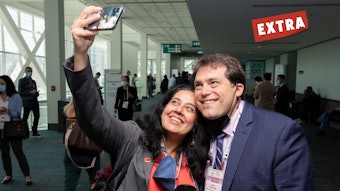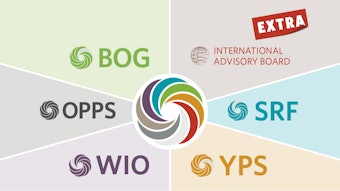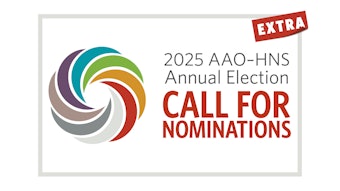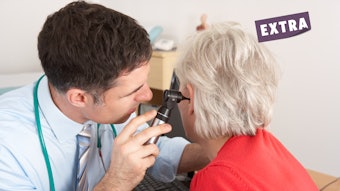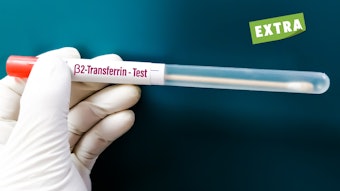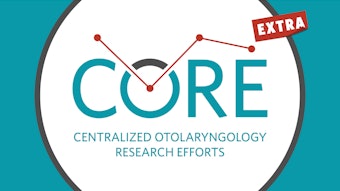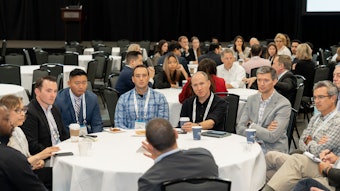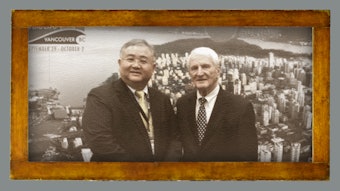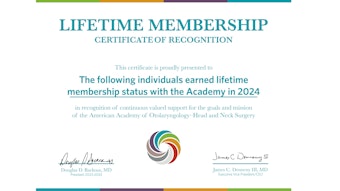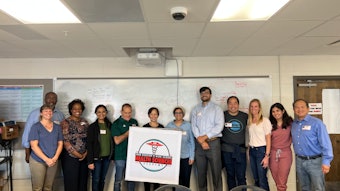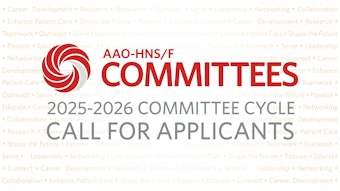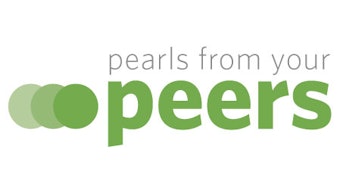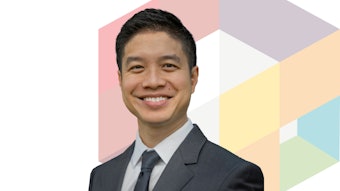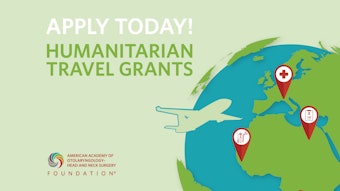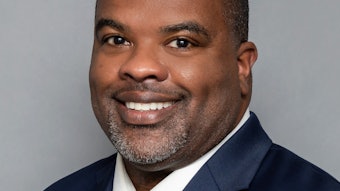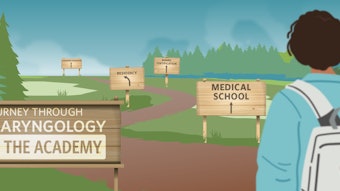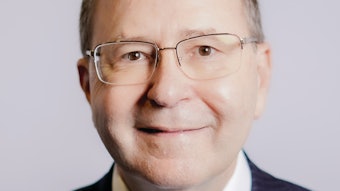Stories from the Field: Pacific Partnership and the USNS Mercy Hospital Ship
The U.S. Navy has long been involved in humanitarian health assistance. Otolaryngologists have participated in everything from planning missions to high-level surgical care.
Philip A. Gaudreau, MD,* and Art A. Ambrosio, MD, MBA*, on behalf of the Humanitarian Efforts Committee
Pacific Partnership and the USNS Mercy Hospital Ship
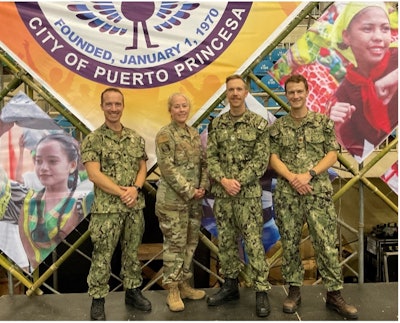 Members of the Pacific Partnership Cleft Lip and Palate Team. (Left to right) Commander Philip Gaudreau, MD, Colonel Kerry Latham, MD, Captain Eamon O'Reilly, MD, and Lieutenant Commander Tanner Miller, MD.
Members of the Pacific Partnership Cleft Lip and Palate Team. (Left to right) Commander Philip Gaudreau, MD, Colonel Kerry Latham, MD, Captain Eamon O'Reilly, MD, and Lieutenant Commander Tanner Miller, MD.
The USNS Mercy Hospital Ship (T-AH 19) deployed in support of this operation and assisted in the care of over 107,000 patients. In response to this terrible disaster, the U.S. Navy saw an opportunity to work with partner nations across the Pacific to build disaster preparedness and provide humanitarian assistance, and the Pacific Partnership was born. Since 2006, the Pacific Partnership has occurred on an annual basis with the Mercy participating every other year.
This mission has served to increase interoperability between the U.S. Navy, foreign militaries, governments, and aid organizations through humanitarian medical, dental, and engineering work so that these organizations can respond more effectively during times of disaster. In addition to the care provided, there is a strong focus on subject matter expert exchanges in which experts from the U.S., partner nations, and host nations all work together to exchange information and ideas across dimensions of medical care and disaster relief.
Location and Need
The nations of the Pacific Rim include many small island countries with limited access to medical care and often no access to otolaryngologists. In the planning phase of these missions, advanced onboard (ADVON) teams traveled to these nations ahead of the planned mission to meet with local officials and medical providers to determine how we can best support their needs. As a result of the limited access to head and neck care, otolaryngology has been a frequent request for participation in these missions. Otolaryngologists have participated in everything from planning these complex missions to directing surgical care aboard the ship, to providing high-level surgical care both on board Mercy and in partner nation hospitals.
Report on Deployment in Support of the Pacific Partnership In 2018
Art A. Ambrosio, MD, MBA, Commander in the United States Naval Reserve and Associate Clinical Professor of Head & Neck Surgery at the UC Irvine School of Medicine
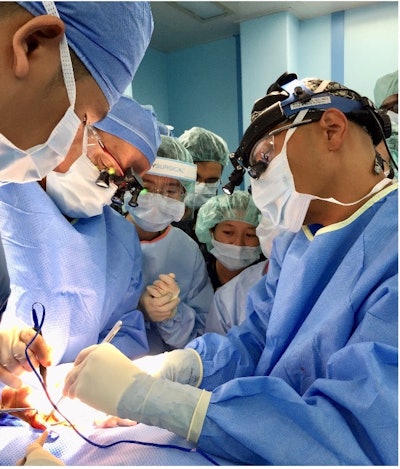 Commander Art Ambrosio, MD, MBA, worked with local surgeons and Vietnamese translators to successfully resect a large parotid gland neoplasm.
Commander Art Ambrosio, MD, MBA, worked with local surgeons and Vietnamese translators to successfully resect a large parotid gland neoplasm.
A United States Navy ADVON team met with the local civilian surgeons in Vietnam in an underserved area to identify communities, surgeons, and head and neck surgical patients who would benefit from the bilateral exchange before the USNS Mercy deployment for the following year.
An advanced-size parotid neoplasm patient, typically performed in that region by plastic surgery and maxillofacial surgery was identified due to the advanced nature of the tumor. Bilateral conversation and subject matter exchange lectures and clinical case discussions additionally took place, adding educational breadth to the planned surgical mission.
To establish rapport, all of the surgeons and operative staff assessed the patient together in clinic, followed by local dining to not only discuss the upcoming surgery, but to enjoy a meal that included delicious bánh xèo, bánh mì sandwiches, and other local cuisine. We even traded laughs singing childhood songs at the dinner table.
Ultimately, the patient, who was preoperatively diagnosed with pleomorphic adenoma, had a post-operative diagnosis of low-stage carcinoma ex-pleomorphic adenoma, which was one of the potentially expected outcomes. Surgery took place in a multidisciplinary fashion with the assistance of translators intraoperatively with the patient achieving an excellent clinical outcome, with sharing of technique throughout from ADVON identification of the patient to building surgical team interdependence to communicating long-term post-operative follow-up.
Report on Deployment in Support of the Pacific Partnership in 2021 and 2023
Philip A. Gaudreau, MD, Commander in the Medical Corps of the United States Navy and Associate Professor of Surgery at the Uniformed Services University
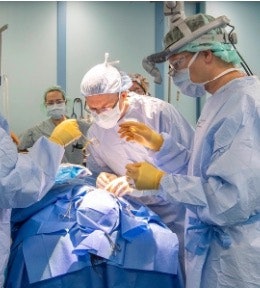 Captain Eamon O’Reilly, MD, and Lieutenant Commander Tanner Miller, MD, performing a bilateral cleft lip repair.
Captain Eamon O’Reilly, MD, and Lieutenant Commander Tanner Miller, MD, performing a bilateral cleft lip repair.
The highlight of these experiences for me was the opportunity to interact with and teach the otolaryngology residents at Victoria Luna Medical Center in Manila. This hospital is the primary teaching hospital for the Armed Forces of the Philippines (AFP). The residents are exposed to a diverse array of surgical cases but have limited pediatric otolaryngology exposure. I was able to give them a few lectures and participate in their academic conferences. This led to future collaboration and participation in a large virtual pediatric otolaryngology symposium that they had the following year.
Although the clinical care that we can provide on these missions is very rewarding, it is the continued relationships developed between individuals and communities that allow for continued expansion in the surgical care that is available to patients. Through my relationships with the Pacific Partnership planners in the AFP, I was also able to travel back to the Philippines in 2022 to participate in a USNS Mercy surgical mission to provide cleft lip and palate care in the city of Puerto Princesa, a coastal city on the small island of Palawan in the West Philippines.
This mission was very different as it involved supporting a local plastic surgeon that simply had an overabundance of cases without the capacity to complete them all. We were able to support this clinical need with the knowledge that a skilled surgeon was available to support any post-operative care that was needed.
Overall, these missions have been some of the most satisfying of my Navy career both for the care that we have been able to provide and the relationships and friendships that have been built.
The views expressed in this article are those of the author and do not necessarily reflect the official policy or position of the Department of the Navy, Department of Defense, nor the U.S. Government
The author is a military service member or employee of the U.S. Government. This work was prepared as part of my official duties. Title 17, U.S.C., §105 provides that copyright protection under this title is not available for any work of the U.S. Government. Title 17, U.S.C., §101 defines a U.S. Government work as a work prepared by a military Service member or employee of the U.S. Government as part of that person’s official duties.
